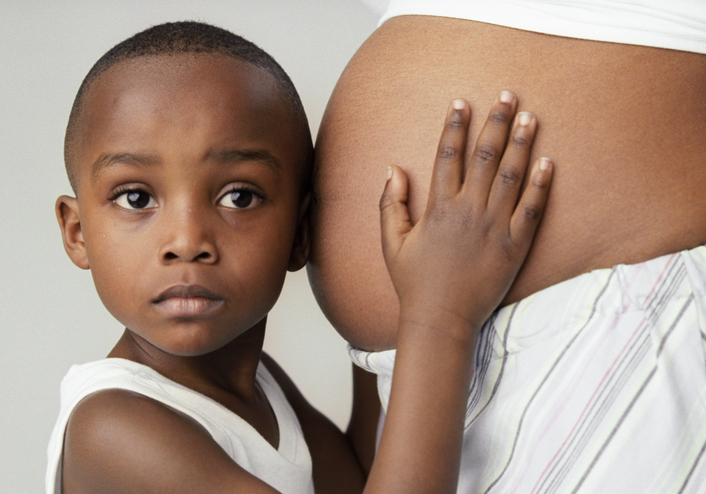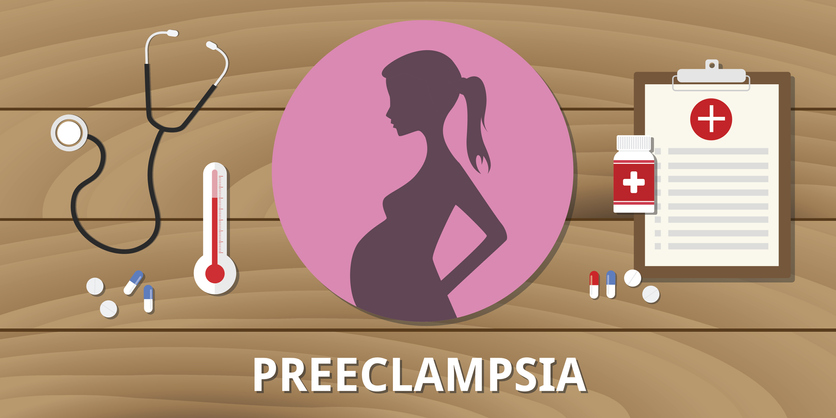How To Be Proactive About Preeclampsia and Your Baby’s Health With Vitamin D

By Joy Stephenson-Laws, J.D., Founder
Having a baby is a magical journey, but pregnancy comes with risks and sometimes complications. For example, the Centers for Disease Control and Prevention (CDC) reports that every year, between two to 10 percent of pregnancies in the United States are affected by gestational diabetes.
Some pregnant women may also get a condition called preeclampsia.
“Preeclampsia is a complication of pregnancy in which affected women develop high blood pressure (hypertension); they can also have abnormally high levels of protein in their urine (proteinuria). This condition usually occurs in the last few months of pregnancy and often requires early delivery of the infant. However, this condition can also appear shortly after giving birth (postpartum preeclampsia),” according to the National Institutes of Health (NIH).
In some cases, this condition can even lead to stroke, organ failure and death in pregnant women.

Reportedly, Beyonce had preeclampsia when she was pregnant with her twins. Eventually, she ended up having an emergency C-section, and her twins spent a few weeks in the neonatal intensive care unit.
Kim Kardashian is another star all too familiar with preeclampsia. In her first pregnancy, she suffered from high blood pressure and bad swelling (which can be another sign of preeclampsia). Her doctors ended up having to induce her labor five weeks early.
Fortunately, despite the complications, Beyonce and Kim Kardashian have healthy children, but another concern for pregnant women with preeclampsia is that their children are at a higher risk of having high blood pressure. Basically, if a pregnant woman has hypertension, it appears that her child has a higher chance of having hypertension.
Hypertension increases the risk of developing heart disease and stroke - two of the leading causes of death among Americans.
The good news is that pregnant women can be proactive by making sure their unborn baby is getting enough vitamin D in the womb.
According to a recent study from John Hopkins Bloomberg School of Public Health, there is evidence which suggests that children who are born to mothers with high blood pressure are at a higher risk of having high blood pressure themselves, but this risk can be reduced or even eliminated for children who are given higher levels of vitamin D in the womb.
"Programmed in the womb.""There is increasing evidence that cardiovascular disease risk is, to a great extent, programmed in the womb, and we now see that it may be vitamin D that alters this programming in a beneficial fashion," said the study lead author, in this Medical Xpress report.
This is a big deal. As mentioned, cardiovascular disease is one of the leading causes of death among Americans. And if a great amount of cardiovascular disease risk is “programmed in the womb,” this means that pregnant women can be proactive.
As a mother myself, I know how you can feel so out of control when it comes to pregnancy. Sometimes things just happen. But if we can gain some control by making sure we are getting the right amounts of nutrients we need, such as vitamin D, then this is very empowering and can help ensure that we will have the healthiest possible babies born.
The study looked at data analysis from 754 mother and child pairs in Massachusetts between the years of 1998 to 2018.
“The dataset included information on preeclampsia during pregnancy, tests on blood from the umbilical cord at birth, and the children's blood pressure from age 3 to 18,” according to the Medical Xpress report.
It is very important to note that 62 percent of the mothers included in the study were African-American, and 52 percent were considered to be overweight or obese.
African-Americans are known to have higher rates of hypertension. People with darker skin are also more likely to be deficient in vitamin D. This vitamin is sometimes called “the sunshine vitamin” because it is made with the help of the sun (very few foods naturally contain vitamin D). Darker skin contains more melanin, which provides more of a barrier from absorbing sunlight and being able to make vitamin D (compared to lighter skin). People who spend a lot of time indoors and who live in climates where there is not a lot of consistent sunlight are also at a greater risk of being deficient in vitamin D.
About 10 percent of the women included in the study had preeclampsia. And the results of the researchers analysis revealed that overall, children born to preeclamptic mothers had higher systolic blood pressure compared to children born to non-preeclamptic mothers.
But looking at umbilical cord blood vitamin D levels produced some interesting findings.
“Children in the lowest 25 percent range of vitamin D levels (lowest "quartile") were about 11 percentile points higher in blood pressure, on average, if their mothers had had preeclampsia, compared to children of non-preeclamptic mothers,” according to the report.
Furthermore, “For children in the highest vitamin D quartile, there appeared to be no difference in average blood pressure if their mothers had had preeclampsia—in other words, the results suggest that having relatively high vitamin D levels at birth, which could be achieved through dietary supplements, may completely mitigate the risk brought by preeclampsia.”
This isn’t to say that having preeclampsia is no big deal and that you can just combat it with vitamin D supplementation. However, this new information may suggest that if you develop preeclampsia in pregnancy, there is something you can do to possibly prevent it from harming your baby.
As discussed in an earlier pH Labs blog, getting enough vitamin D in pregnancy is also imperative because it may also greatly decrease the risk of a baby developing schizophrenia when they get older. Vitamin D is also important for healthy bone development.
Supplement Wisely.
It is important to acknowledge that this study focused on administering higher doses of vitamin D. Depending on your condition and pregnancy, this may be appropriate for you, however, you must seek the advice of your doctor when it comes to supplementation (especially when you are pregnant or have existing health issues). If you are pregnant or trying to conceive, it is likely that you are taking a prenatal vitamin, but still discuss vitamin D with your doctor. Some prenatal vitamins may not contain enough vitamin D for you. And as always, take routine nutrient tests in order to identify any nutrient imbalances or deficiencies. If a deficiency or imbalance is identified, your doctor can work with you on making the necessary dietary changes and, of course, help you with supplementation if necessary.
Be Proactive About Preventing Preeclampsia.
One of the best ways to prevent preeclampsia is to make sure you are as healthy as possible before you conceive and practice healthy habits throughout the entire pregnancy. It is always good to monitor your sodium intake, eat a nutrient-rich diet with plenty of fresh fruits and vegetables and exercise (per guidance).
For more information on how you can help yourself have a healthy pregnancy and baby, read here. And for more information about vitamin D, read here.
Enjoy your healthy life!
Disclaimer: This article is not intended to provide medical advice. Please consult with your doctor or another competent healthcare practitioner to get specific medical advice for your situation.
The pH professional health care team includes recognized experts from a variety of health care and related disciplines, including physicians, attorneys, nutritionists, nurses and certified fitness instructors. This team also includes the members of the pH Medical Advisory Board, which constantly monitors all pH programs, products and services. To learn more about the pH Medical Advisory Board, click here.







